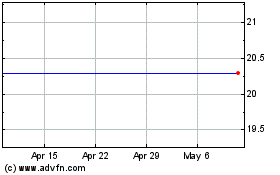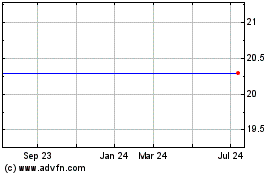Subpar Rainy Season Threatens Brazil's Sugarcane Crop
March 21 2012 - 10:28AM
Dow Jones News
Weather worries are creating headaches for a second straight
year in Brazil, the world's top sugar producer and exporter, where
insufficient rains are smothering hopes for the sugarcane crop.
The main growing regions of Sao Paulo and Parana states, which
together account for more than 60% of Brazil's sugarcane, have seen
about half as much rainfall as average since the start of February,
according to Brazil's Somar Meteorologia.
"The situation here is quite critical," said Joao Guilherme
Iglezias, director of agricultural operations at Agroterenas, a
cane supplier to Royal Dutch Shell PLC's (RDSA) and Cosan SA's
(CSAN3.BR) sugar and ethanol joint venture Raizen. "This time of
year is when the cane normally grows and develops a lot, we've been
missing a lot of rain, and that will definitely compromise part of
the cane development for this next crop."
Concerns about Brazil's crop have sent raw-sugar futures traded
in New York to their highest level in three weeks. On Wednesday,
the May-delivery contract was steady at 25.62 cents a pound.
"The weather problems in the center-south (region) are beginning
to bring new direction to the fundamentals," Arnaldo Correa, head
of Archer Consulting in Sao Paulo, wrote in a weekly report. "It
seems the market has to awaken."
Brazil's sugarcane production last year declined for the first
time in a decade, sending shockwaves through the global sugar
market, as Brazil accounts for some 50% of global trade in the
commodity. An unusual combination of temperature variation and
precipitation in early 2011 triggered sugarcane plants to flower
during the harvest, consuming their sucrose content, while a series
of rare winter frosts further reduced yields. Sugar futures in New
York behaved erratically for most of 2011, breaking above 30 cents
a pound several times and falling as low as 20 cents between
rallies.
Iglezias said some sugarcane that sprouted before the frosts
didn't survive, forcing the plants to reset their growth cycle.
"Now we've had less time for development and worse conditions,"
he said. "It's visible. A great part of these losses are
unrecoverable."
Olivia Nunes, a meteorologist at Somar, said a cold front should
bring good rains to Sao Paulo and Parana later this week. But with
Brazil's characteristically dry winter expected to set in by late
April, rainfall in coming weeks probably won't make up for February
and March.
Neither Brazil's government nor leading sugarcane-industry
association Unica have published forecasts for the key center-south
region's 2012-13 crop, which mills should begin crushing around
mid-April. Independent analysts widely expect the crop to fall
somewhere between 2011-12 output, calculated by Unica at 494
million metric tons of sugarcane, and the previous year's
production of 557 million tons.
Fabio Meneghin, an analyst at Brazil's Agroconsult, said better
fertilization and an increase in planted acreage should allow the
crop to come within the higher end of that range, notwithstanding
the lack of rainfall.
"It's too early to talk about a drop," Meneghin said. "We're
still considering a number closer to 540 million tons than to 520
(million)."
Another weak sugarcane crop would also be bad news for Brazilian
consumers hoping for a break from high gasoline prices. About half
of the country's cars have flex-fuel engines capable of running on
pure sugarcane ethanol, while regular gasoline sold at the
country's fueling stations contains a mandatory 20% level of
ethanol blended in.
After ethanol production from the center-south's 2011-12
sugarcane crop fell 19%, the fuel became more expensive to burn
than gasoline. Prices have yet to come down as Brazil's emerging
economy demands more and more fuel.
-By Paul Kiernan, Dow Jones Newswires; (+55)11-3544-7074,
paul.kiernan@dowjones.com
Cosan Limiited (NYSE:CZZ)
Historical Stock Chart
From Mar 2024 to Apr 2024

Cosan Limiited (NYSE:CZZ)
Historical Stock Chart
From Apr 2023 to Apr 2024
